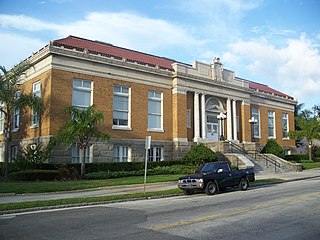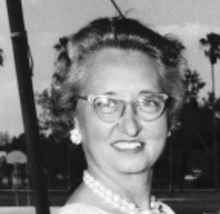
Hillsborough County is located in the west-central portion of the U.S. state of Florida. In the 2020 census, the population was 1,459,762, making it the fourth-most populous county in Florida and the most populous county outside the Miami metropolitan area. A 2021 estimate has the population of Hillsborough County at 1,512,070 people with a yearly growth rate of 1.34%, which itself is greater than the populations of 12 states according to their 2019 population estimates. Its county seat and largest city is Tampa. Hillsborough County is part of the Tampa–St. Petersburg–Clearwater Metropolitan Statistical Area.

Plant City is an incorporated city in Hillsborough County, Florida, United States, approximately midway between Brandon and Lakeland along Interstate 4. It is part of the Tampa Bay area. The population was 39,764 at the 2020 census.

Temple Terrace is an incorporated city in northeastern Hillsborough County, Florida, United States, adjacent to Tampa. As of the 2020 census, the city had a population of 26,690. It is the third and smallest incorporated municipality in Hillsborough County, after Tampa and Plant City. Incorporated in 1925, the community is known for its rolling landscape, bucolic Hillsborough River views, and sand live oak trees; it is a Tree City USA. Originally planned in the 1920s as a Mediterranean-Revival golf course community, it is one of the first such communities in the United States.

For other Carnegie Libraries, see Carnegie library (disambiguation)
The Tampa–Hillsborough County Public Library System (THPL) is a public library system based in Hillsborough County, Florida. THPL is part of two larger library networks, the Tampa Bay Library Consortium, and the Hillsborough County Public Library Cooperative which includes Temple Terrace Public Library in Temple Terrace, Florida, and Bruton Memorial Library in Plant City, Florida. There are 33 branches of the Hillsborough County Public Library Cooperative. Services provided by the THPL include internet access, public meeting room spaces, interlibrary loans, a Bookmobile, a Cybermobile for Spanish speakers, technology classes, adult literacy programs, and downloadable eBooks. Drive-thru windows for returns and hold pick-ups are located at the Jimmie B. Keel and the Jan Kaminis Platt Regional Libraries. In 2017, THPL introduced the new HAAL Pass, which gives access to certain library resources to all students in the Hillsborough County Public Schools System. Students use their student ID number to use different online databases, borrow up to three physical items and read eBooks. The Tampa–Hillsborough County Public Library System is also a part of Hillsborough County government. On January 1, 2018, the library cooperative became one of the largest in the country to go fine free. Overdue fees for borrowed materials were eliminated with the implementation of the "Just Bring It Back" initiative. In 2019 the cooperative received the FLA Library of the Year Award. Tampa-Hillsborough County Public Library was recognized for its community focused initiatives as it "reorganized its staffing model and eliminated overdue fines, yielding $1 million in savings while increasing access to library resources and expanding opportunities for community engagement through unique, scalable programs."

For other Carnegie Libraries, see Carnegie library (disambiguation)

John F. Germany Public Library is the flagship library of the Tampa-Hillsborough County Public Library System (THPL). It is part of the Hillsborough County Public Library Cooperative and the Tampa Bay Library Consortium.

The Temple Terrace Public Library serves 250,000 patrons a year with a selection of more than 100,000 volumes and 52 computers. It is the only library in the city of Temple Terrace, FL, and it is part of the Hillsborough County Library Cooperative, along with branches in Tampa, Florida and Plant City, Florida. It is located near several colleges, including the University of South Florida and Florida College, as well as the Museum of Science & Industry in Tampa.

The Bloomingdale Regional Library was originally designed to lessen patron usage at the Brandon Regional Library, which was the busiest library in the Hillsborough County System, at the beginning of the 21st century. In the early stages of development, the Bloomingdale Library was often referred to as the South Brandon Library because it was expected to serve people in the FishHawk, Bloomingdale, Valrico, and Lithia areas. Though there were several discussed sites for the creation of the library, the Hillsborough County Commissioners narrowed down their selection to two locations. One of the locations was across the street from Lithia Springs Elementary School on Lithia Pinecrest Road, while the other locality was next to Bloomingdale High School on Bloomingdale Avenue. Though there were concerns regarding possible traffic congestion on Bloomingdale Avenue, the Commissioners ultimately decided to accept the latter option. This site was attractive for cost-saving reasons, as a member of the McLean family, offered to discount the acreage with an additional free acre.

The Port Tampa City Library is a library located in a historic bank building in the Port Tampa section of Tampa, Florida, at 4902 W. Commerce Street. It is a neighborhood branch in the Tampa-Hillsborough County Public Library System.

The Robert W. Saunders Sr. Public Library is a member of the Tampa-Hillsborough County Public Library System (THPL) and the Hillsborough County Public Library Cooperative (HCPLC).
The James J. Lunsford Law Library is a member of the Tampa–Hillsborough County Public Library System (THPL) and the Hillsborough County Public Library Cooperative (HCPLC).
The Seminole Heights Branch Library is a member of the Tampa–Hillsborough County Public Library System.
The Jan Kaminis Platt Regional Library is part of the Tampa-Hillsborough County Public Library System (THPL), as well as a member of the Hillsborough County Public Library Cooperative (HCPLC). The library is a 25,000 sq. ft. facility located at 3910 S. Manhattan Ave. in Tampa, Florida. The library provides books, magazines, DVDs, music, and internet access, as well as programs and activities, and a drive-thru window for check out and return of materials. In December 2018 the library underwent an extensive renovation which enclosed the children's area and expanded the number of meeting and study rooms to eight.
The C. Blythe Andrews Jr. Public Library, formerly known as the College Hill Branch Library, is in Tampa, Florida. The 8,500 sq. foot facility was renamed in 2011 for Florida Sentinel Bulletin owner and publisher C. Blythe Andrews. The library is located at 2607 E. Dr. MLK Jr. Blvd. It is part of the Tampa–Hillsborough County Public Library System (THPL), as well as a member of the Hillsborough County Public Library Cooperative (HCPLC).

The New Tampa Regional Library is a 25,000 square foot public library located in the Hunter's Green area in north central Hillsborough County, Florida. It is a single-story building and the 19th facility in the Tampa-Hillsborough County Public Library System. New Tampa Regional Library is located directly between Hunter's Green Elementary School and Benito Middle School.

Helen Virginia Stelle was the first director of the Tampa Free Library and one of the founders of the Florida Library Association.

The Burgert Brothers were early photographers, most prominently known for documenting the growth of Tampa, Florida. Their photos span the late 1800s until the early 1960s. They depict times of war, natural disasters such as the 1921 Tampa Bay hurricane, economic booms, economic busts, transportation, building projects, bungalows, African American life, cigar factories, sponge docks, strawberry fields, mercantile businesses, banks, and service stations. They also feature Florida leisure activities at parks and beaches including golf, shuffleboard, checkers, and tennis. Thanks to the prolific Burgert Brothers local events and traditions like the Gasparilla Pirate Festival and Florida State Fair have been well-documented.
Perry G. Wall II was an American businessman and politician in Tampa, Florida.

Emma Quintilla Geer Bruton (1907-1989) was a philanthropist, author, library advocate, the namesake for the Bruton Memorial Library in Plant City, Florida, as well as that for Bruton-Geer Hall at the University of Florida Levin College of Law in Gainesville, Florida.















